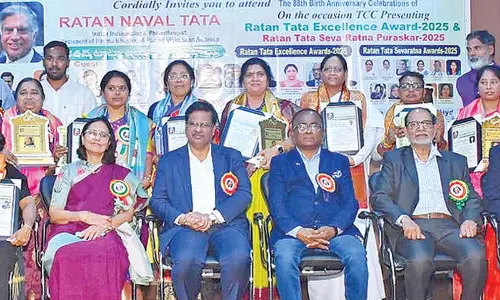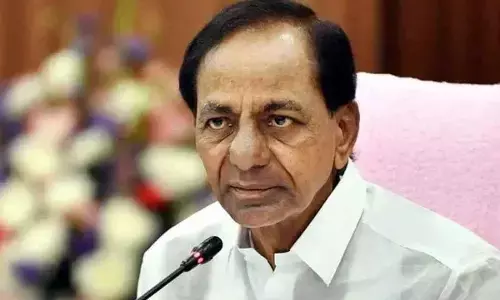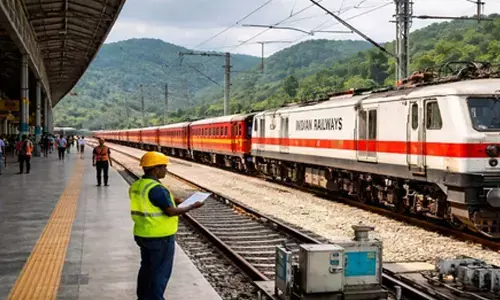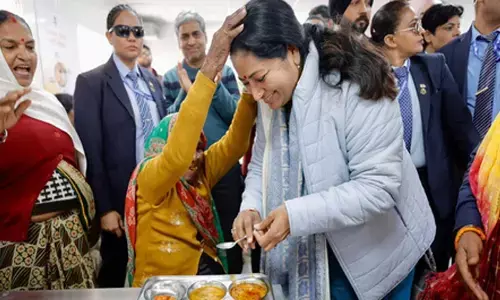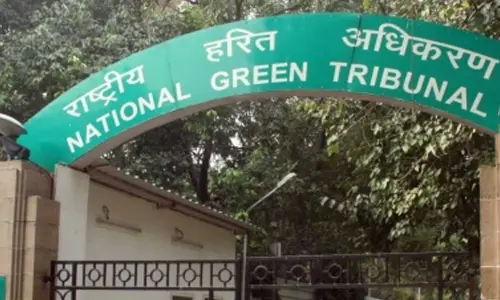Understanding economy terminology

The ease of doing business index is an index created by the World Bank Group. The index is based on the study of laws and regulations, with the input and verification by more than 9,600 government officials, lawyers, business consultants, accountants and other professionals in 185 economies who routinely advise on or administer legal and regulatory requirements.
Ease of doing business index:
The ease of doing business index is an index created by the World Bank Group. The index is based on the study of laws and regulations, with the input and verification by more than 9,600 government officials, lawyers, business consultants, accountants and other professionals in 185 economies who routinely advise on or administer legal and regulatory requirements.
Higher rankings indicate better, usually simpler, regulations for businesses and stronger protections of property rights. India now ranks 130 out of 189 countries in the ease of doing business, moving up four places from last year’s adjusted ranking of 134.
Double Finance Repression:
It is a phenomenon when the banks are faced with financial repression both on the asset and liability side. Financial repression on asset side is a by-product of the SLR ( Statutory Liquidity Ratio) i.e. the amount of liquid assets which banks are required to hold in form of cash, government bonds and gold. Financial repression on the liability side is the result of continued inflation since 2007. This has led to negative interest rates and relative diminishing of household savings.
Factors that led to Double Financial Repression:
i)SLR Requirements
ii)Priority sector lending
iii)Inflation
iv)Lack of competition in private sector banking
Special Mention Accounts:
Special Mention Accounts are those standard accounts which exhibit early warning signal and lie in between the standard and NPA category. Banks will categorise accounts as SMA when the money remains outstanding for 30-90 days after due payment date. It has also incorporated some non-financial signs for banks to detect and treat loan as SMA. There will not be any provisioning for SMA category loans. This is step before account gets classified as NPA. These accounts require special attention to reverse their downward movement i.e. slippage to NPA.
Seventh Central Pay Commission:
Government of India has appointed the Seventh Central Pay Commission comprising Justice Shri Ashok Kumar Mathur as Chairman. The Commission is headquartered in Delhi. In its report submitted to the Union Finance Minister Arun Jaitley , the Seventh Central Pay Commission has recommended an overall increase of 23.55 per cent in pay, allowances, and pension for government employees. Within this, the Commission’s report recommends a 16 per cent increase in basic pay, a 63 percent increase in allowances and a 24 per cent hike in pension. The recommendations are to come into force on January 1, 2016.
Fiscal Responsibility and Budget Mangement Act, 2003:
It is an Act of the Parliament of India to institutionalise financial discipline, reduce India's fiscal deficit, improve macroeconomic management and the overall management of the public funds by moving towards a balanced budget. The main purpose was to eliminate revenue deficit of the country.
Subsequent to the enactment of the FRBMA, the following targets and fiscal indicators were agreed by the Central government:
- Revenue deficit
- Date of elimination – 31 March 2009 (postponed from 31 March 2008)
- Minimum Annual reduction – 0.5% of GDP
- Fiscal Deficit
- Ceiling – 3% of the GDP by 31 Mar 2008
- Minimum Annual reduction – 0.3% of GDP
- Total Debt – 9% of the GDP (a target increased from the original 6% requirement in 2004–05)
- Annual Reduction – 1% of GDP
- RBI purchase of Government bonds – to cease from 1 April 2006
Four fiscal indicators to be projected in the medium term fiscal policy statement were proposed. These are, revenue deficit as a percentage of GDP, fiscal deficit as a percentage of GDP, tax revenue as percentage of GDP and total outstanding liabilities as percentage of GDP.
Finance Minister Arun Jaitley pegged fiscal deficit for 2015-16 at 3.9 per cent of GDP and proposed to lower it to 3 per cent by 2017-18, a year later than planned earlier.
Goods and Services Tax Bill:
The Goods and Services Tax Bill or GST Bill, officially known as The Constitution (122nd Amendment) Bill, 2014, proposes a national Value added Tax to be implemented in India from June 2016. "Goods and Services Tax" would be a comprehensive indirect tax on manufacture, sale and consumption of goods and services throughout India, to replace taxes levied by the Central and State governments.
Goods and services tax would be levied and collected at each stage of sale or purchase of goods or services based on the input tax credit method. This method allows GST-registered businesses to claim tax credit to the value of GST they paid on purchase of goods or services as part of their normal commercial activity.
Taxable goods and services are not distinguished from one another and are taxed at a single rate in a supply chain till the goods or services reach the consumer. Administrative responsibility would generally rest with a single authority to levy tax on goods and services. Exports would be zero-rated and imports would be levied the same taxes as domestic goods and services adhering to the destination principle.
Salient features of Indian GST System:
- The power to make laws in respect of supplies in the course of inter-State trade or commerce will be vested only in the Union government. States will have the right to levy GST on intra-State transactions including on services.
- Centre will levy IGST on inter-State supply of goods and services. Import of goods will be subject to basic customs duty and IGST.
- GST defined as any tax on supply of goods and services other than on alcohol for human consumption.
- Central taxes like, Central Excise duty, Additional Excise duty, Service tax, Additional Custom duty and Special Additional duty and State level taxes like, VAT or sales tax, Central Sales tax, Entertainment tax, Entry tax, Purchase tax, Luxury tax and Octroi will subsume in GST.
- Petroleum and petroleum products i.e. crude, high speed diesel, motor spirit, aviation turbine fuel and natural gas shall be subject to the GST on a date to be notified by the GST Council.
- 1% origin based additional tax to be levied on inter-State supply of goods will be non-creditable in GST chain. The revenue from this tax is to be assigned to the Origin State. This tax is proposed to be levied for initial two years or such period as recommended by the GST Council.
- Provision for removing imposition of entry tax / Octroi across India.
- Entertainment tax, imposed by States on movie, theatre, etc will be subsumed in GST, but taxes on entertainment at panchayat, municipality or district level to continue.
- GST may be levied on the sale of newspapers and advertisements and this would give the government’s access to substantial incremental revenues.
- Stamp duties, typically imposed on legal agreements by the state, will continue to be levied by the States.
- Administration of GST will be the responsibility of the GST Council, which will be the apex policy making body for GST. Members of GST Council comprised of the Central and State ministers in charge of the finance portfolio.
Perform, Achieve and Trade (PAT):
Perform, Achieve and Trade (PAT) is a market based mechanism to enhance cost effectiveness of improvements in energy efficiency in energy intensive large industries and facilities, through certification on energy savings that could be traded.
It is the most innovative and challenging new initiative introduced under the National Mission on Enhanced Energy Efficiency (NMEEE), an Indian government initiative proposed to address national problems of inefficient energy use. NMEEE is one of eight proposals created by India's National Action Plan for Climate Change and is based on the Energy Conservation Act of 2001.
Targets for improvements in energy efficiency are set under section 14 of the Energy Conservation Act, 2001 in a manner that reflects fuel usage and the economic effort involved. The Government, in March 2007 notified units in nine industrial sectors, namely aluminium, cement, chlor-alkali, fertilizers, iron and steel pulp and paper, railways, textiles and thermal power plants, as Designated Consumers(DCs).
Under the scheme, 3 year targets for reducing Specific Energy Consumption (SEC) have been notified. The scheme also incentivises higher reduction of SEC by a market based mechanism through issuance of tradeable Energy Savings Certificates (ESCerts). The industrial consumer could achieve the SEC reduction target in one of the following manner:
a. Capital Investment using own funds to invest in new technologies/processes to reduce SEC;
b. Purchase of ESCERTs equal to the gap in meeting SEC target; and
c. Using an Energy Service Company (ESCO) to undertake the investment in Energy Performance Contract (EPC) mode. In this mode, the industry could avoid investments and yet achieve the targets.
Renewable Purchase Obligation(RPO):
The Electricity Act and National Action Plan on Climate Change (NAPCC) provide a roadmap for increasing the renewable energy in total generation. RPO is the obligation mandated by Central/State Regulatory Commission and is applicable to Distribution Licensee: power distribution companies (DISCOMs); Open Access Consumer: those Procuring power from power exchanges (IEX/PXIL), from traders, through bilateral agreements, etc.;
Captive consumer: those generating and consuming power from captive coal/natural gas power plants (primarily industrial users in cement, steel, chemical etc. sectors.). The Regulatory Commission in each State mandates a certain percentage of electricity generated through the above process to be from renewable sources.
Financial Action Task Force (on Money Laundering) (FATF):
A major economic evil related to financial sector is the practice of money laundering. Money laundering involves keeping financial assets from illegal activity in a disguised manner. This money is kept without detection of the illegal activity for future use.
Through money laundering, the launderer transforms the monetary proceeds derived from criminal activity into funds with an apparently legal source. Now many illegal economic activities and the resultant financial transactions involve different countries. Hence, to make effective counter policies against money laundering, globally coordinated measures are needed.
The Financial Action Task Force (FATF) is such global standard setting body for anti-money laundering and combating the financing of terrorism (AML/CFT).
The FATF was formed at the efforts of the OECD, which is a group of the developed countries. At present, the FATF has 34 member countries and 2 regional organisations, representing most major financial centres in all parts of the globe.
The FATF Secretariat supports the Task Force and President. The Secretariat service is provided by the OECD, and the Secretariat is located at the OECD Headquarters in Paris.
By: Balalatha Mallavarapu
Also Read:











